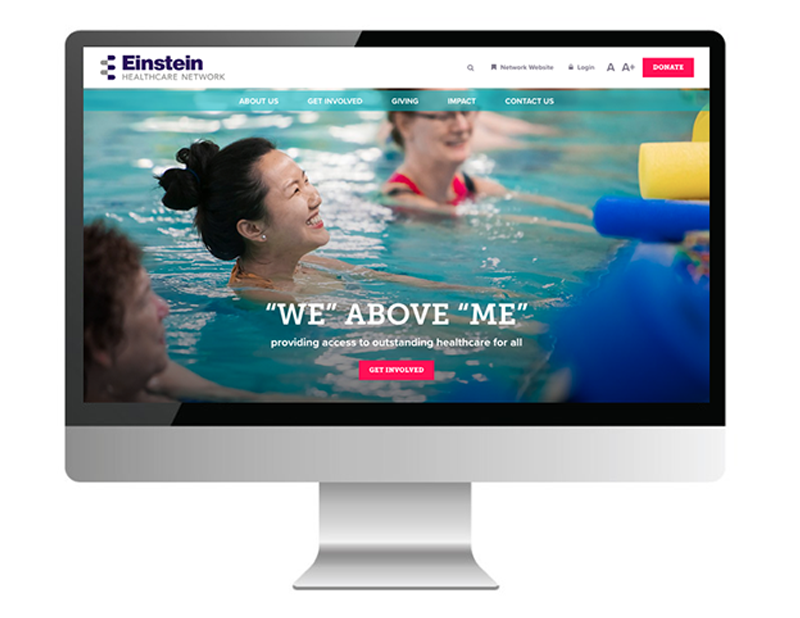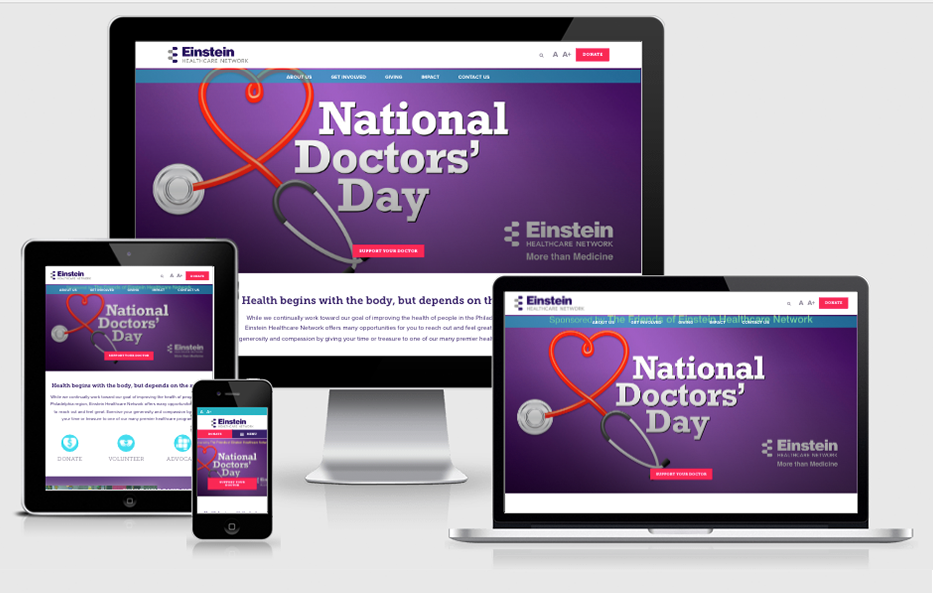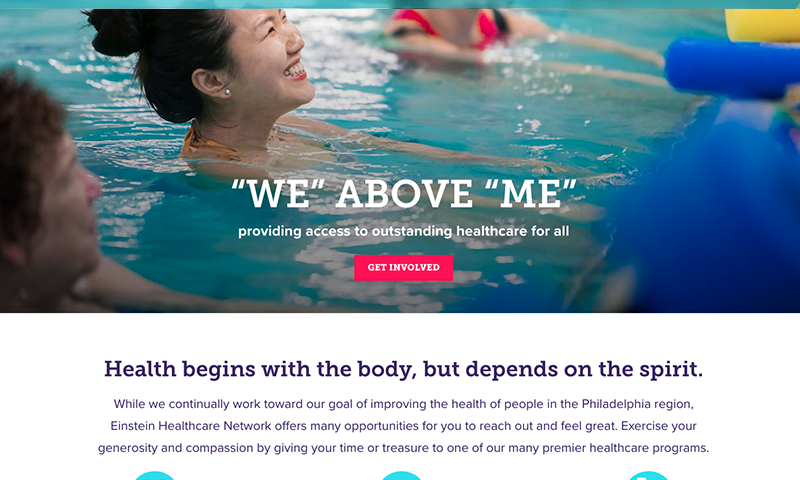Project Details
Brand: messaging, identity & guidelines
Web: design & development
CMS: custom WordPress template
Site: www.advance.einstein.edu


1. Discovery and Research The web design process for Einstein Medical Center begins with in-depth discovery and research. This includes understanding the hospital's mission, patient needs, stakeholder goals, and reviewing the existing site. Competitor analysis and audience research help identify best practices and expectations for a medical website.
2. Planning and Strategy Next, a strategic plan is created that outlines the site’s structure, content strategy, and user journey. A sitemap is developed to organize pages such as services, departments, physician directories, patient portals, and appointment booking. Accessibility and HIPAA compliance are prioritized from the start.
3. Wireframing and UX Design Wireframes are sketched to show the basic layout of each page, ensuring user experience (UX) is intuitive and patient-friendly. This step focuses on organizing content in a way that makes navigation easy for both patients and staff, emphasizing key features like contact forms, emergency information, and health resources.
4. Visual Design Once the wireframes are approved, the visual design phase begins. This includes selecting brand-aligned colors, fonts, and imagery that reflect Einstein Medical Center’s identity. The design must communicate professionalism, trust, and compassion while maintaining a clean and modern appearance.
5. Content Development Quality content is created or refined to support the site’s goals. This includes writing clear and informative descriptions of medical services, physician bios, patient instructions, and FAQs. SEO best practices are applied to improve search visibility for local healthcare services.
6. Development With design and content finalized, the website is coded using modern technologies to ensure fast load times, mobile responsiveness, and accessibility. The content management system (CMS), such as WordPress or Drupal, is customized for easy updates by hospital staff.
7. Testing and Quality Assurance Before launch, the site undergoes rigorous testing across devices and browsers to ensure functionality, security, and performance. Forms, navigation, and integrations like appointment systems and patient portals are thoroughly checked.
8. Launch After approvals, the website is launched during a strategic window to minimize disruption. A backup is taken, DNS changes are made, and the site is monitored closely for any post-launch issues.
9. Maintenance and Updates Post-launch, the site is regularly updated with new content, security patches, and performance improvements. Analytics tools are used to track user behavior and make ongoing enhancements based on data insights.





